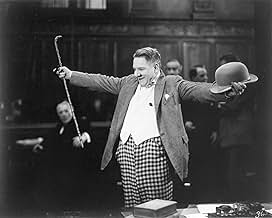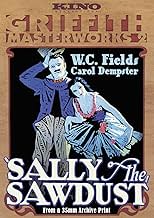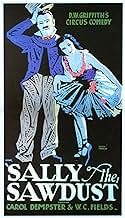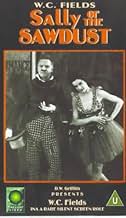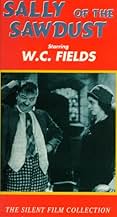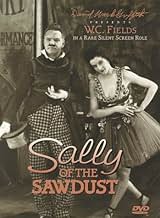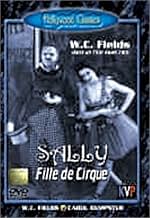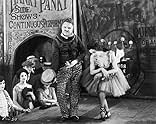Judge Foster throws his daughter out because she married a circus man. She leaves her baby girl with Prof. McGargle before she dies. Years later Sally is a dancer with whom Peyton, a son of ... Read allJudge Foster throws his daughter out because she married a circus man. She leaves her baby girl with Prof. McGargle before she dies. Years later Sally is a dancer with whom Peyton, a son of Judge Foster's friend, falls in love. When Sally is arrested McGargle proves her real pare... Read allJudge Foster throws his daughter out because she married a circus man. She leaves her baby girl with Prof. McGargle before she dies. Years later Sally is a dancer with whom Peyton, a son of Judge Foster's friend, falls in love. When Sally is arrested McGargle proves her real parentage.
- Awards
- 3 wins total
- Leon - the Acrobat
- (as Glen Anders)
- Stooge
- (uncredited)
- Bandit
- (uncredited)
- Bit Role
- (uncredited)
- Yokel in the Old Army Game
- (uncredited)
- Director
- Writers
- All cast & crew
- Production, box office & more at IMDbPro
Storyline
Did you know
- TriviaD.W. Griffith had good reason not to use the name or title "Poppy" for this movie -a movie titled "Poppy" with a character by that name had come out in 1917.
- GoofsWhen Sally and Eustache were lying on the railway, after get wet on the train, you can clearly see that the railway ends on the film studio wall, right behind them.
- ConnectionsFeatured in W.C. Fields: Straight Up (1986)
For SALLY OF THE SAWDUST, being the best known feature length film for either WC Fields or Carol Dempster during the silent era, mainly due to its current availability and frequent revivals, it's nearly forgotten that this particular assignment was actually directed by the father of film himself, DW Griffith, in spite the fact that many of his famous trademarks are evident here, such as his signature beneath the title cards; numerous closeups on the title character being Dempster; flashbacks giving insight to Sally's origins, her mother, and how McGargle was chosen as the little girl's guardian prior to her mother's death; along with cut to the chase and last minute rescues. For today's audience aware of this film's very existence, SALLY OF THE SAWDUST is remembered solely as a Fields comedy, but it's Dempster who acquires most of the attention under Griffith's careful supervision. Dressed nearly throughout the story in shabby attire, one scene, set during a society function, spotlights Dempster's Sally all dolled up in elegant fashion, styled hair, necklaces, and wearing low-cut evening gowns.
As for the story, Sally (Carol Dempster) is the circus waif reared by Professor Eustance McGargle (WC Fields), a lovable con man, sideshow juggler and entertainer. (Flashbacks reveal that Sally, whose mother had married a circus man against the wishes of her father, later becoming a widow with a child, and before she, too, dies, entrusts her little girl to their best friend, McGargle.) Now that Sally is a young adult, McGargle comes to the conclusion that Sally is growing up and decides to return her to grandparents, now living in Green Meadow. Upon their arrival, they both stir up controversy when attending a charity bazaar for homeless children which is taking place near the estate of the very wealthy Judge Henry L. Foster (Erville Alderson) and his wife (Effie Shannon), who happen to be Sally's grandparents. Complications arise when Peyton Lennox (Alfred Lunt) ,the rich young son of a respected leading citizen engaged to marry a society society girl he does not love, becomes infatuated by the visiting Sally. After her "Pop" escapes arrest for dealing in a crooked card game, Sally, in turn is arrested and jailed, while Peyton gets sent out of town by his parents hoping that he'd forget about this common girl. As McGargle learns of Sally's predicament, he's in one himself being held hostage by bootleggers in a far away cottage.
Regardless of numerous changes from the original play, SALLY OF THE SAWDUST does remain loyal to Fields' character, a juggler and shifty con man who "never gives a sucker an even break," with motto being "It's the old Army game." Fields, who makes the most of his initial movie lead, does display his given talent through several key scenes, but it's director Griffith who makes one big mistake by shifting Fields' juggling act in the background with the camera range at a far distance distracted by the heads of his curious spectators, instead of focusing in a nearer range and center stage of him. While not one of the best comedies from the silent era, SALLY OF THE SAWDUST does include some fine comedic moments, mostly supplied by Fields himself.
SALLY OF THE SAWDUST was first introduced to public television as part of the 13-week 1971 presentation of THE SILENT YEARS, hosted by Orson Welles, which was, by this time, the only known surviving WC Fields from the silent era. During Welles' profile on both film and Fields, it's interesting to note how Welles affectionately spoke of Fields by addressing him as "Uncle Claude." Out of circulation for little over a decade, SALLY OF THE SAWDUST resurfaced on video cassette by the 1980s, with one of the distributors being Blackhawk Video, accompanied by Wurlitzer pipe organ score by Jack Ward, the same score that was used for THE SILENT YEARS. The movie's length, ranging from 90 minutes to nearly two hours, depending on the distributor and the silent projector speed. For an added bonus, KINO Video distributed the restored 112 minute VHS /DVD version with new orchestral score consisting of prologue opening and some lost footage supposedly unseen since its initial release.
Because of the mild success to SALLY OF THE SAWDUST, Griffith reunited Dempster and Fields in THAT ROYAL GIRL (1926). Due to the unavailability of that reunion, SALLY OF THE SAWDUST goes down in movie history as the one that paved the way to the future comedy cinematic world of a man named WC Fields. (***)
Details
Box office
- Gross US & Canada
- $304,081
- Runtime1 hour 44 minutes
- Sound mix
- Aspect ratio
- 1.33 : 1
Contribute to this page


